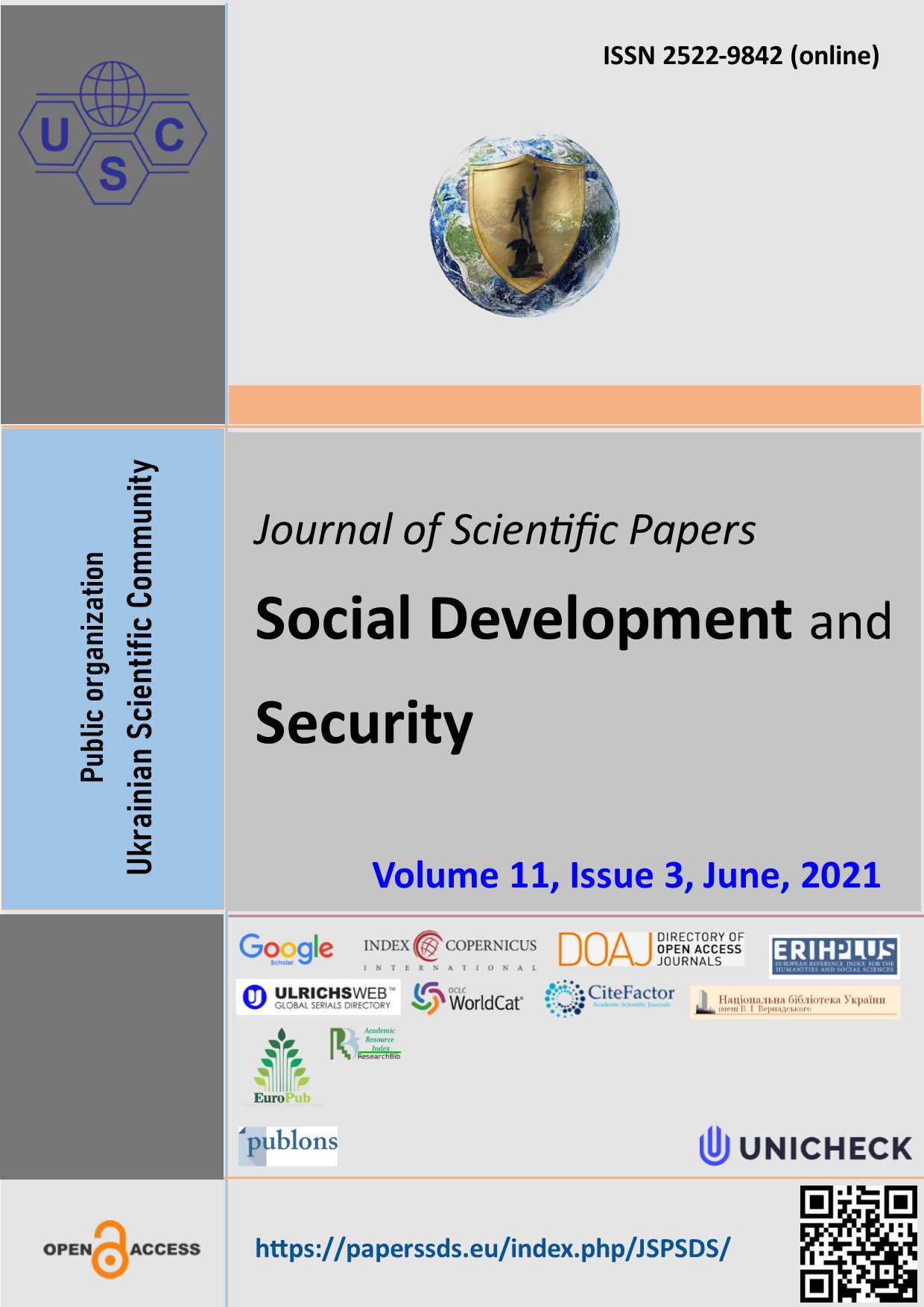Specific issues of assessment of helicopters security at the test stage
Abstract
The process of testing any military aircraft, including helicopters, is to obtain the parameters (flight characteristics) that characterize this sample, and compare them with the parameters specified in the request for proposal. One of the key requirements for the protection system of modern helicopters is to reduce their thermal visibility, which is successfully implemented through the installation of screen-exhaust devices. The main characteristics of screen-exhaust devices contain a range of parameters and factors that not only require a comprehensive approach to assessing their effectiveness, but also constantly changing in the light of new developments in this area. Therefore, the question of improving the methods of assessment of the subsystem of screen-exhaust devices at the stage of testing the helicopter is quite relevant.
Assessment of compliance of the helicopter with the installed screen-exhaust devices to the requirements of the tactical and technical task, at the testing stage, is impossible without a separate method, the use of which will provide a unified approach to determining the effectiveness of protection at pre-design and early design stages of development (modernization) also when testing protection systems of modernized and newest models of helicopter equipment.
Many scientific researches and publications, both in Ukraine and abroad, have been paid attention to the problem of assessing the security of helicopters by reducing thermal visibility. But existing approaches do not fully take into account modern protection systems, such as screen-exhaust devices, which limits their use in testing new and upgraded models of helicopters.
Given the current development of technology, there is a logical question of assessing the security of helicopters, taking into account the contribution of the subsystem of screen-exhaust devices of the protection system at the stage of their testing.
The article analyzes the main components that determine the order of selection of criteria for evaluating the effectiveness of the helicopter protection system, taking into account the contribution of the subsystem of screen-exhaust devices. The analysis of the hierarchical structure of the helicopter, presented in the form of a complex technical system, which consists of elements that determine its properties. Ways to improve the methods of assessing the contribution of screen-exhaust devices to the overall protection system of the helicopter during the tests are proposed.
According to the research results, a method of helicopter security assessment is proposed taking into account the contribution of the screen-exhaust device subsystem of the protection system, which allows to determine the weakest properties of the subsystem, assess its overall level, characterized by a set of indicators and develop measures to improve helicopter security.
Downloads
References
Захист повітряних об'єктів від ракет з інфрачервоним самонаведенням / Кравчук І. С., Архипов М. І., Туренко С. М., Штарнов В. І. Київ: ТОВ “Видавничий дім “Інтернаука”, 2020. 295 с.
Леонтьєв О. Б. Побудова математичної моделі показників якості вертольоту армійської авіації при вирішенні ним десантних задач / О. Б. Леонтьєв, Ю. І. Миргород, М. М. Момот // Збірник наукових праць ОНДІ ЗСУ. – 2007. – № 1 (6). – C. 14-21.
Башинський В. Г. Підвищення захищеності вертольотів при проведенні їх модернізації / В. Г. Башинський, Р. Г. Шабан, С. М. Туренко, О. Б. Котов // Харків. Науковий журнал. Системи озброєння і військової техніки. № 3(23) 2010. – с. 22-25.
Башинский В. Г. Методика определения инфракрасного излучения двигателей летательного аппарата при проведении испытаний / В. Г. Башинский, Ю. А. Камак // Науково-практичний журнал. Інтегровані технології та енергозбереження. №1. 2011. – C. 76-81.
Zhang JZ, Pan CX, Shan Y. Progress in helicopter infrared signature suppression. Chin J Aeronaut, Volume 27, Issue 2, 2014, Pages 189-199.
Pan CX, Zhang JZ, Shan Y. Modeling and analysis of helicopter thermal and infrared radiation. Chin J Aeronaut 2011;24(5): 558–67.
Pan CX, Zhang JZ, Shan Y. Effects of exhaust temperature on helicopter infrared signature. Appl Therm Eng 2013;51:529–38.
Abstract views: 307 PDF Downloads: 302
Copyright (c) 2021 Ihor Televnyi , Anton Kozyr , Pavlo Open’ko

This work is licensed under a Creative Commons Attribution 4.0 International License.
The authors agree with the following conditions:
1. Authors retain copyright and grant the journal right of first publication (Download agreement) with the work simultaneously licensed under a Creative Commons Attribution License that allows others to share the work with an acknowledgment of the work's authorship and initial publication in this journal.
2. Authors have the right to complete individual additional agreements for the non-exclusive spreading of the journal’s published version of the work (for example, to post work in the electronic repository of the institution or to publish it as part of a monograph), with the reference to the first publication of the work in this journal.
3. Journal’s politics allows and encourages the placement on the Internet (for example, in the repositories of institutions, personal websites, SSRN, ResearchGate, MPRA, SSOAR, etc.) manuscript of the work by the authors, before and during the process of viewing it by this journal, because it can lead to a productive research discussion and positively affect the efficiency and dynamics of citing the published work (see The Effect of Open Access).
















